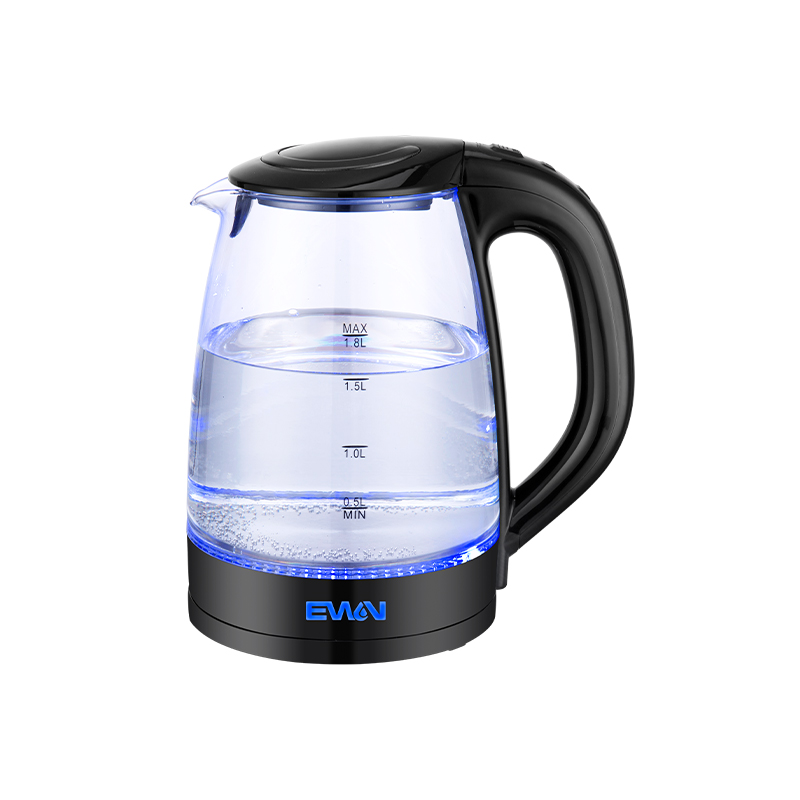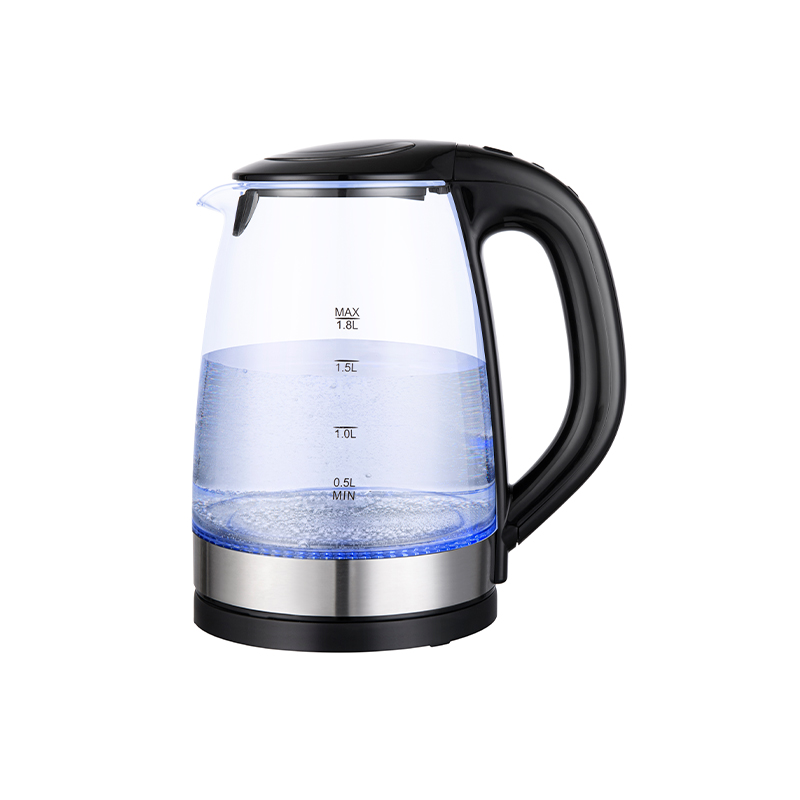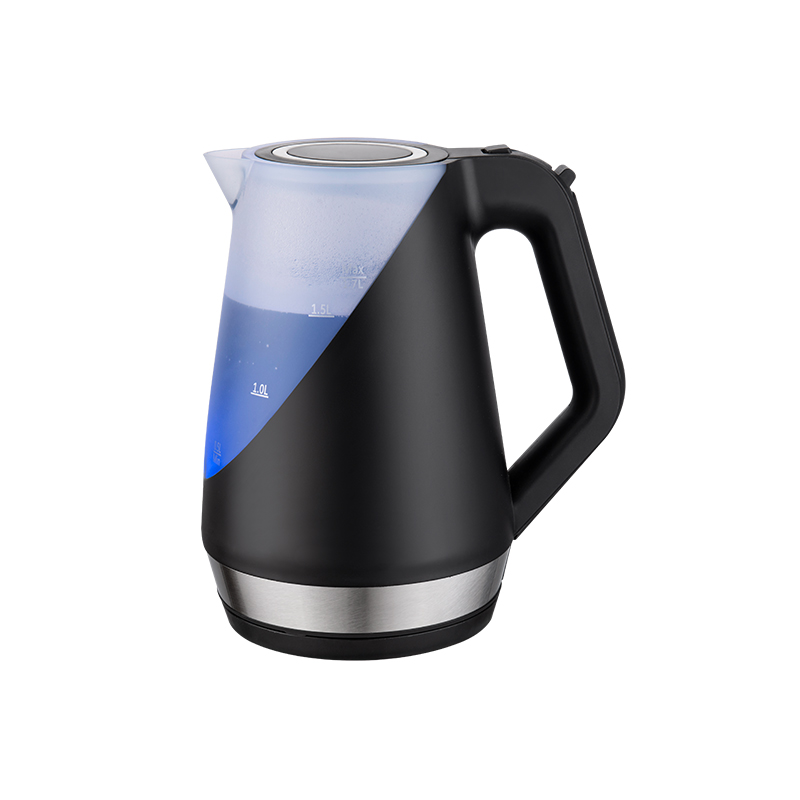+86-18667862027
Web Menu
Product Search
Exit Menu
How does a plastic kettle differ from a stainless steel or glass kettle in terms of design and material?
Introduction to Kettle Materials
Electric kettles are essential appliances in most households, offering a quick and efficient way to boil water for various uses. While the functionality of all kettles is generally the same, the materials used in their construction significantly impact their performance, durability, and appearance. The most common materials used for kettles include plastic, stainless steel, and glass. Each material has distinct characteristics that influence the kettle’s design, functionality, and maintenance requirements. This article will explore how plastic kettles differ from stainless steel and glass kettles, focusing on design, material properties, and the advantages and disadvantages of each.
Design Differences in Plastic, Stainless Steel, and Glass Kettles
The design of a kettle is largely determined by the material it is made from, with each material offering different benefits and limitations.
Plastic Kettles
Plastic kettles are typically lightweight, with a design that prioritizes portability and ease of use. The exterior of plastic kettles is usually made from food-grade plastic, which is durable enough to withstand regular use but light enough to handle with ease, even when filled with water. Plastic kettles are also often designed with ergonomic handles and easy-to-pour spouts. Their design can include features like transparent windows for monitoring water levels, a wide base for stability, and a variety of color options to suit different tastes.
However, the design of plastic kettles can sometimes feel less premium compared to stainless steel or glass kettles. The exterior may become discolored over time due to exposure to heat and minerals in the water, and plastic can develop cracks or become brittle with prolonged use. The appearance of plastic kettles may also not have the same sleek, modern aesthetic as stainless steel or glass alternatives.
Stainless Steel Kettles
Stainless steel kettles are known for their sleek and modern appearance. The shiny, metallic finish provides a polished look that is often associated with durability and quality. Stainless steel is also resistant to rust, corrosion, and staining, which helps maintain the kettle’s appearance over time. These kettles tend to have a more solid and premium feel due to the material’s weight and construction.
The design of stainless steel kettles typically includes a sturdy handle, a well-designed spout for controlled pouring, and a wide base to ensure stability. Some stainless steel kettles also feature an internal plastic lining to reduce heat transfer to the handle, improving comfort and safety. Many stainless steel kettles are cordless, with a base that contains the heating element, allowing for easy pouring without worrying about tangled cords.
While stainless steel kettles are often appreciated for their visual appeal and durability, they can sometimes be heavier than plastic kettles, which might be a consideration for some users. Additionally, they can be prone to fingerprints and water spots, which may require more frequent cleaning to maintain their appearance.
Glass Kettles
Glass kettles are known for their transparent design, allowing users to watch the water boil. This feature is aesthetically pleasing for some, as it offers a more visually interesting experience than opaque kettles. Glass kettles are also generally free from any potential chemical leaching that can occur in plastic, making them a popular choice for people concerned about material safety.
The design of glass kettles typically includes a metal or plastic base that houses the heating element, with the main body being made of heat-resistant glass. The handle and lid are often made from plastic or stainless steel for better grip and safety. Glass kettles are easy to clean, as their smooth surface does not absorb stains or odors.
However, one significant disadvantage of glass kettles is their fragility. They are more likely to break or shatter compared to plastic or stainless steel models, especially if dropped or exposed to rapid temperature changes. Glass kettles are also typically heavier than plastic kettles, although they may not be as heavy as stainless steel models.
Design Comparison of Kettle Materials
| Material | Weight | Aesthetic | Durability | Fragility |
|---|---|---|---|---|
| Plastic | Lightweight | Less premium look | Moderate | Low |
| Stainless Steel | Heavier | Modern and sleek | Very high | Low |
| Glass | Moderate to Heavy | Transparent, elegant | High | High (fragile) |
Material Properties: Plastic vs. Stainless Steel vs. Glass
Each material used in kettles—plastic, stainless steel, and glass—has distinct properties that affect their overall performance, heat retention, and safety.
Plastic Kettles
Plastic is a lightweight and versatile material, commonly used in the construction of electric kettles. The main advantages of plastic kettles are their affordability and lightness, making them ideal for people looking for a cost-effective and portable option. Plastic kettles are often more affordable than stainless steel or glass models, and their design is usually more colorful, catering to a wide range of consumer preferences.
However, plastic is less efficient in terms of heat retention. It heats up quickly but loses heat just as fast. The plastic body may also become discolored over time, particularly when exposed to high temperatures and minerals in the water. In addition, while many plastic kettles are made from BPA-free materials, concerns about chemical leaching have raised questions about the safety of using plastic kettles for boiling water.
Stainless Steel Kettles
Stainless steel is known for its durability and heat retention properties. It is more effective than plastic in keeping the water warm for longer periods, making it ideal for people who want their kettle to retain heat. Stainless steel kettles are also resistant to rust, corrosion, and staining, which ensures they last longer without losing their aesthetic appeal. Additionally, stainless steel does not leach chemicals into the water, unlike some plastics.
The main downside of stainless steel is that it is heavier than plastic, which might be less desirable for some users. Stainless steel can also be prone to fingerprints, water spots, and scratches, requiring more maintenance to keep the kettle looking pristine.
Glass Kettles
Glass is a non-porous material that doesn’t absorb odors or stains, making it a good choice for people concerned about chemical interactions or who prefer a neutral material. The main advantage of glass kettles is their transparency, which allows users to watch the water boil, adding an aesthetic element to the process. Glass is also generally free from chemicals like BPA, which are sometimes found in plastics.
However, glass is not as efficient in terms of heat retention as stainless steel. It can also be more prone to thermal shock, meaning that sudden changes in temperature could cause the glass to crack or shatter. While glass kettles are easy to clean, they are heavier than plastic kettles and are more fragile, making them susceptible to breaking when dropped.
Material Properties Comparison
| Material | Heat Retention | Durability | Chemical Leaching | Maintenance |
|---|---|---|---|---|
| Plastic | Low | Moderate | Possible (BPA) | Moderate |
| Stainless Steel | High | Very High | None | High |
| Glass | Moderate | High | None | Moderate |
Performance: Speed, Efficiency, and Heat Retention
In terms of performance, stainless steel and plastic kettles are the most commonly used materials. While glass kettles have a unique appeal due to their aesthetic qualities, they tend to be less efficient when it comes to heat retention and overall boiling speed.
Speed of Boiling
Plastic kettles generally heat up faster than stainless steel or glass due to the material's lower thermal conductivity. However, this speed is counteracted by the rapid loss of heat once the water reaches boiling point. Stainless steel kettles take slightly longer to heat up but retain heat much better. Glass kettles, due to their heavier nature and the fact that the body is transparent, can take longer to boil compared to plastic and stainless steel kettles, though this difference is usually minimal.
Energy Efficiency
Stainless steel kettles are generally more energy-efficient than plastic and glass kettles due to their superior heat retention properties. While plastic kettles use more energy to maintain the temperature after boiling, stainless steel kettles keep water hot for longer, making them a better choice for conserving energy. Glass kettles, despite their slower boiling time, are reasonably energy-efficient, as long as they are used correctly and not exposed to rapid temperature changes.
Maintenance and Durability
In terms of maintenance, stainless steel kettles require the least amount of cleaning. Their smooth surface does not absorb stains or odors, and they can be easily wiped down. Plastic kettles, while easy to maintain, can become discolored or damaged over time, particularly when exposed to high heat. Glass kettles require regular cleaning to prevent water stains, and they must be handled with care due to their fragility.
Performance Comparison of Kettle Materials
| Material | Boiling Speed | Energy Efficiency | Heat Retention | Ease of Maintenance |
|---|---|---|---|---|
| Plastic | Fast | Moderate | Low | Moderate |
| Stainless Steel | Moderate | High | High | High |
| Glass | Moderate | Moderate | Moderate | Moderate |
address
No.935 Qiye Road, Zhouxiang Town, Cixi City, Zhejiang Province, China
Sale’s Email
leila@nbewin.com
sales8@nbewin.com
sales9@nbewin.com
Copyrighte Ningbo Ewin Electrical Appliances Co., Ltd. All Rights Reserved.












